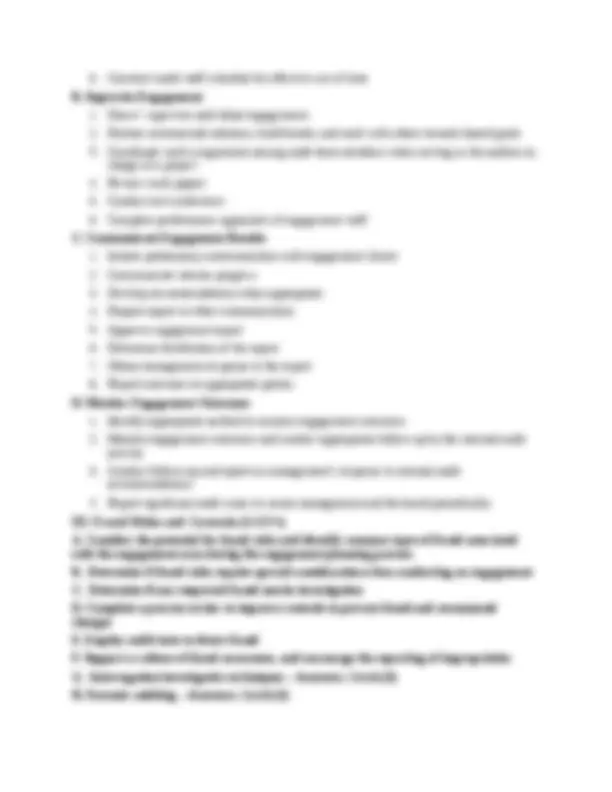




Study with the several resources on Docsity

Earn points by helping other students or get them with a premium plan


Prepare for your exams
Study with the several resources on Docsity

Earn points to download
Earn points by helping other students or get them with a premium plan
Community
Ask the community for help and clear up your study doubts
Discover the best universities in your country according to Docsity users
Free resources
Download our free guides on studying techniques, anxiety management strategies, and thesis advice from Docsity tutors
Refer to details to get contents
Typology: Study Guides, Projects, Research
1 / 4

This page cannot be seen from the preview
Don't miss anything!



100 questions | 2.0 Hours (120 minutes)
The new CIA exam Part 2 topics tested include managing the internal audit function via the strategic and operational role of internal audit and establishing a risk-based plan; the steps to manage individual engagements (planning, supervision, communicating results, and monitoring outcomes); as well as fraud risks and controls. Note: All items in this section of the syllabus will be tested at the Proficiency knowledge level unless otherwise indicated below.
A. Strategic Role of Internal Audit
B. Operational Role of IA
C. Establish Risk-Based IA Plan
A. Plan Engagements